There is more to Paisley than you might think. From an incredible skyline featuring stunning architecture to remarkable stories; authentic makers to surprising adventurers and genuinely welcoming hosts. Let us surprise and delight you with our beautiful town, it’s rich history, and with just how much there is to explore.
“…keep an eye on Paisley.”
Disraeli, B., 1880, Endymion, p.322, ch.64
Vevar, an old Scots spelling of weaver, is Glasgow’s newest weaving mill, established by award winning designers Chantal Allen and Christopher McEvoy in 2020. With over 20 years’ experience of design and manufacture between them, it was an exciting prospect for all at the Sma’ Shot Cottages to collaborate with such innovative and exciting designers and craftspeople.
Christopher employs the history of Scottish textiles within his work, drawing on his familial connection with the textile industries in Paisley and The Calton, historic influences which have seen Christopher produce pieces for fashion houses including Alexander McQueen and Charles Jeffery’s Loverboy. Working as a teacher and weave technician at the Glasgow School of Art, Chantal’s innovative and colourful designs have enabled her to travel to India, where she designed and developed Jacquard woven fabrics for the European and American markets.
The Old Paisley Society were approached by Chantal and Christopher last year, with their idea of producing a limited edition, hand-woven scarf inspired by the collections of the Sma’ Shot Cottages which would be sold to raise funds to aid our work in preserving Paisley’s textile past.
The Sma’ Shot Cottages were opened by the Old Paisley Society in 1985. Volunteer owned and run, the Cottages’ complex explores two distinct periods in Paisley’s textile past, through the eighteenth and nineteenth centuries. The original Paisley weaver’s cottage, built in the 1750s on Shuttle Street, was first occupied by weaver David Lawson and his family. Shuttle street was populated, almost solely, by those involved in the textile trades through the eighteenth and nineteenth centuries. Initially built to house weavers and their loom shops, Shuttle Street soon came to accommodate winders, sewers, pattern setters, washers, starchers, silk finishers and even a shoemaker.
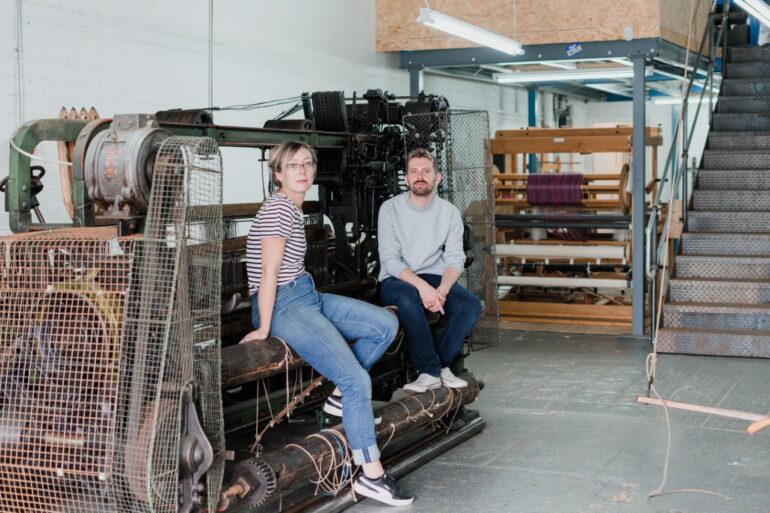
In working with Vevar to create a unique scarf celebrating the textiles of Paisley, Chantal and Christopher were able to visit the Cottages, immersing themselves in the history of the Paisley weaver. The collections of the Cottages are vast, and would prove to offer immeasurable design inspiration. Artefacts including original nineteenth century Paisley shawls and quilts made up of nineteenth century fabrics including Turkey Red were used to inform the design of the Sma’ Shot Scarf, and can be seen in the inclusion of Paisley pines in a distinct madder red making up the scarf’s border.
Both Chantal and Christopher have won several awards for their work, and have established their own brands, named Warped Textiles and McEvoy Textiles. Through Vevar, Chantal and Christopher’s shared passion for Scottish textiles is proving to celebrate the history of textiles in Scotland while also preserving the craft of weaving for future generations.
Lucy McConnell
Dress and Textile Historian
PhD Candidate, University of Huddersfield
MLitt BA(Hons) QAVS
When you think of Scotland’s most enduring contributions to the arts, it’s generally split between the classical and the contemporary. Steeped in tradition and the ambiance of a rurally minded, romanticised Scotland that’s been lost to time, the poetic works of Robert Burns, Walter Scott and our own Robert Tannahill have withstood generations of new eyes and are celebrated the world over. In music, our folk heritage has instilled a wistful melody in the planet’s collective consciousness before artists ranging from Texas to Primal Scream and Biffy Clyro proved that we weren’t constrained to the ceilidh.
Yet when it comes to the nation’s greatest exports of the 20th century, one of Scotland’s crowning achievements not only abandoned much of the country’s wider cultural heritage, but seemed to actively hold it in contempt. First published in 1993, Trainspotting was an instant phenomenon that exposed a labyrinthine version of Leith defined by drugs, small-time schemes and a deep love of Iggy Pop. For its author Irvine Welsh, the debut novel’s appeal was expected on some level, but the scope has left him taken aback ever since.
“I thought it would become a cult book but not generation-defining, which is what other people have called it since”, he told The Guardian in 2018. “It’s strange, but it has taken on such a life of its own that when I see it on a shelf in a bookshop, it almost feels like someone else wrote it.”
Defined by its unflinching gallows humour and gritty depictions of life as an addict, this classic book intercepted the canon of Scotland’s finest works through the lens of a more deprived, less gilded version of the capital city. But while it may have taken place among the east coast’s ever-expanding urban sprawl, Irvine Welsh’s most universally beloved brainchild actually has inextricable ties to our own hometown of Paisley.
Despite taking place across Edinburgh and London, Welsh’s magnum opus establishes its relationship with Renfrewshire from its very opening salvo. Split across seven riveting sections including the introductory ‘Kicking’, the chaotic ‘Blowing It’ and the parting words of ‘Exit’, the first chapter of the entire book is snappily entitled “The Skag Boys, Jean-Claude Van Damme and Mother Superior.”
What’s the significance of this, you ask? Well, both this opening chapter and Trainspotting’s 2012 prequel cribs its name directly from Ferguslie’s finest export.
“There is a play called “The Slab Boys” by a great Scottish playwright called John Byrne”, Welsh informed CNN’s Payal Uttam in 2011. “I decided to call it ‘”Skagboys” as a parody of that.”
Set in the 1950’s and at the height of industrialisation, Byrne’s iconic trilogy — which commenced with the self-titled offering in 1978 — chronicles the lives and misadventures of Phil, ‘Spanky’ and Hector as they attempt to escape the slab room of Paisley’s A.F. Stobo & Co in search of a better life. While there are stark differences in the stakes and tone, both Trainspotting and Byrne’s theatrical masterwork chronicle the working-class experience with levity and an unstifled hopefulness that refuses to be overshadowed by some of its darker elements. On top of that, the use of colloquial language, slang and those rhythmic speaking patterns that can only be found in ungentrified circles is used to ground the reader or viewer in the atmosphere of their settings.
Where Trainspotting’s opening section made a subtle allusion to Byrne’s influence, ‘Skagboys’ – Welsh’s novel that is set in the preceding years before the events of Trainspotting — takes this one step further by introducing a character from Byrne’s neck of the woods.
While studying at Aberdeen University, the series ‘protagonist’ and occasional moral compass Mark Renton encounters a fellow student by the name of Joanne that is revealed to be from Paisley. Described as a “nosy Weedgie bird, no proper Weedgie, but fae somewhere near thaire”, he later undertakes an interrailing trip with her, his then-lover Fiona and friend ‘Bisto.’
In typically Welsh fashion, things soon devolve from there until later on in the tale, Renton receives a wedding invitation. After initially upholding an uneasy truce, Joanne and ‘Bisto’ are set to be married at a church in Kilmacolm. As for the reception, Renfrewshire-based readers were soon accosted by the address of a familiar locale for all sorts of joyful occasions.
“Bowfield Hotel and Country Club,
Bowfield Road, Howwood, near Glasgow Airport, Renfrewshire, PA9 1DB
RSVP: 115 Crookston Terrace, Paisley, PA1 3PF”
As anyone that’s visited will know, the Bowfield is a million miles removed from the squalid locales that many of Trainspotting’s most harrowing and educatory scenes take place in. Still, it’s remarkable to imagine the motley crew that both Welsh’s novel and the iconic, 1996 film adaptation ingrained into our minds all milling about in the hotel’s function suite.
On the subject of Trainspotting’s big screen adaptation, this legendary film’s creation was aided in part by a Paisley institution that’s familiar with births, deaths and everything in-between. Greenlit by Channel 4 Films and penned by veteran screenwriter John Hodge, the journey to Trainspotting’s production actually starts with the movie that provided the firmament for director Danny Boyle to carve out his illustrious career.
Starring Ewan McGregor — soon to be Renton in Trainspotting — Christopher Eccleston and New Zealand’s Kerry Fox, Boyle and Hodge’s 1994 thriller Shallow Grave has become a cult film in its own right and skyrocketed almost everyone involved to fame. Although that’s likely common knowledge by now, a lesser known fact is that the various scenes that take place in a medical facility were shot at Paisley’s very own Royal Alexandra Hospital. During a 2013 event at New York’s Academy Theatre, Boyle regaled the crowd with a comically morbid anecdote from his time on-set at the RAH.
“That scene at the end in the mortuary, where he gets pushed inside, that’s a real mortuary,” Danny recalled. “Chris Eccleston said ‘I can’t do this, can’t go in there.’ There were dead bodies in there so we had a bit of a crisis. Eventually we agreed that we’d put one of the prop guys in there so that when the door is closed and it goes dark, he wouldn’t be alone. You can hear it in the soundtrack, when the door closes and the lights go off, you can hear this guy going, ‘it’s alright Chris,’ very quietly.”
While this Paisley landmark helped craft the climactic moments of Trainspotting’s soon-to-be director’s first feature, it was Welsh’s classic source material, or more specifically, its stage adaptation, that helped spark the career of one of Paisley’s most recognisable exports.
Born on the 13th November 1969, the renowned actor Gerard Butler spent both his early years and adolescence in Paisley, even spending a spell as head boy at the now-defunct St Mirin’s Academy. From there, he’d go on to The University of Glasgow’s School of Law. After a period of floundering his way through life that saw him being fired from an Edinburgh law firm just days prior to obtaining his full qualification, things were looking decidedly grim for the young Butler.
However, it’d soon transpire that the seeds sown by witnessing Welsh’s Trainspotting come to life on-stage would not only be a formative experience that reignited the desire to act within the former Scottish Youth Theatre student, but a role that he felt he could embody with ease. After betting on himself and moving down to London with little in-roads to the entertainment world, Gerard depicted himself at this stage as a “kid who turns up, drinking like a fish, trying to get sober. And deciding I want to be an actor.”
Thankfully for Gerard, his natural aptitude for the dramatic arts and the experiences he’d had in his life meant that the transition was a relatively seamless one. After he’d began to find his feet within the craft, Gerard soon find himself assuming the very role that’d first piqued his interest.
“And within a year, I was back playing Renton on the same stage [where] I had watched the play a year before, at the Edinburgh Festival, a week before I was fired”, he told The Scotsman. “I swear to you on my life, I had watched the guy [in the Renton role] and said, ‘I know I can do this, and it’s breaking my heart.’”
Eventually giving way to a UK & Ireland tour throughout 1996, his portrayal of the misguided youth would account for his first attempt at the sort of multi-layered leading man role that he’d eventually become acquainted with in both lavish Hollywood epics and indie films alike.
In 2018, he and fellow actor Cameron Jack—who portrayed the imposing and psychopathic Begbie in the same adaptation, would reunite for a photo and celebrate how far they’d came from those heady days.
Left transfixed and motivated by what he’d seen at the Edinburgh festival, it’s no exaggeration to say that without the Harry Gibson adaptation of Welsh’s famous work, Paisley’s most renowned thespian may have never trodden the boards or appeared on-camera at all.
As the years have ticked by, Trainspotting’s legacy and cultural importance has continued to grow. In turn, ensuring that both the book and its filmic counterpart have came to represent two of the most seminal pieces of art to emerge from the 90’s. With its reputation continuing to expand and Welsh penning various sequels and offshoots, the idea of a sequel was banded about—and routinely swatted down—for many years. Arriving 20 years on from the initial adventures of Renton, Spud, Sick Boy and Begbie, 2016’s T2: Trainspotting treated audiences to a window into how these characters had grown in the intervening years. And in most cases, proved that the wounds from those early years had yet to heal.
In keeping with tradition, the hotly anticipated sequel couldn’t come to fruition without some tie to our town. This time around, the link would come in the form of the character simply known as ‘Big Bear.’
Best known for his roles in River City, Only An Excuse and Still Game, not to mention his renown as a musical virtuoso, Paisley-born Tom Urie found himself on the call sheet for T2. As he informed us in August, the experience of working on the film proved to be a surreal one to say the very least.
“In every period of my career, it feels like something big comes along”, Tom remarked. “T2: Trainspotting was certainly one of those things.
“I was only in that for a minute, but that one scene has become really iconic. They filmed two hours of extra footage for T2 and they weren’t telling anyone what they were using. So, I didn’t know what was going to make it into the film or not and I didn’t know how it was going to go down because I thought ‘oh god (laughs)’. Thankfully, everyone on all sides of the spectrum laughed at it and no-one’s ever given me a hard time about it. I remember seeing it in the cinema and it was one of the funniest things I’ve ever seen.”
“In every country, you’re going to get divisions”, he said of the scene’s satirical approach to sectarianism. “So, I think wherever anyone’s watching it, they’ll identify with it. Even if they don’t know the ins and outs.”
Rather than being seen as dispensable, Tom beamed about the care and attention with which Trainspotting’s acclaimed director Danny Boyle treated his cast.
“It was unbelievable, it was like nobody else I’ve ever worked with”, Urie enthused. “He knew everybody’s name. There was 200 people and he got to know everyone over those two or three days that we were filming. He came and sat down to have dinner with me, he’d read up on me and had even bought my album off Amazon! He was really, really generous and kind. I was a little bit starstruck because come on, it’s Danny Boyle! But no, he just sat happily and chatted away. He was telling me about all the music that he’d lined up for T2 and he was going on about (Scotland’s own) Young Fathers. It turns out that the guy from Underworld who wrote ‘Born Slippy’ (which soundtracks Trainspotting’s iconic conclusion) had also written the track that you hear in that scene (laughs). So, there’s a little-known fact for you! Danny didn’t have to do all that. I was only there for four days, but he was an absolute gentleman.”
Heralded the world over as a literary and cinematic landmark, Trainspotting has long since surpassed the streets of Edinburgh in order to infiltrate the hearts, minds and in some cases, nightmares of fans the world over. Yet whether it arises from Welsh’s intense admiration of John Byrne, Danny Boyle’s trip to the RAH or the locally-born actors who’ve had their careers impacted by this seminal tale of wayward youth, this iconic story has impacted on and been impacted by our local community in ways that have went unsung for far too long.
It was a very snowy start to the week with the cold weather transforming Paisley and Renfrewshire into a beautiful wintery landscape.
Social media has been full of stunning images of landmarks in our towns and villages and our (usually) green spaces covered in snow over the past few days.
Take a look at some of the amazing photos captured this week by our followers and more spectacular snowy sights spotted on Instagram.
Plus, you can send your pictures to us over at our Facebook and Twitter channels.
Image – Sunset over a snowy Paisley by @lp_travelgeek on Twitter
Image – A snowy Paisley Abbey by @Erinkate_92 on Twitter
Image – Snowfall beside Paisley Town Hall by @lp_travelgeek Twitter
Image – Snow and ice at Craigielinn Fall at Gleniffer Braes by @gbc123 on Twitter
Image – Anchor Mill in Paisley by @lp_travelgeek on Twitter
Image – Snow in Lochwinnoch by @sparkybrain on Twitter
View this post on Instagram
View this post on Instagram
View this post on Instagram
View this post on Instagram
View this post on Instagram
View this post on Instagram
View this post on Instagram
View this post on Instagram
View this post on Instagram
Scotland’s first ever innovation district dedicated to advanced manufacturing is being developed in Renfrewshire and eminent engineer Professor Keith Ridgway CBE believes AMIDS has all the right ingredients for success.
Professor Ridgway should know, having co-founded the pioneering Advanced Manufacturing Research Centre (AMRC) in Sheffield in 2001, which has attracted Boeing, Rolls-Royce, McLaren and UKAEA to set up premises there and now employs over 600 people, boasting 120 industry partners.
Now dedicating all of his time in Renfrewshire in his role as Executive Chairman of the University of Strathclyde’s Advanced Forming Research Centre (AFRC), part of the National Manufacturing Institute Scotland (NMIS), Professor Ridgway explains why AMIDS has so much to offer.
After three years of commuting between Sheffield and Inchinnan, I’m delighted to be here full-time and playing a part in growing both the National Manufacturing Institute Scotland (NMIS) and the Advanced Manufacturing Innovation District Scotland (AMIDS) in Renfrewshire.
There are a lot of similarities between this region and northern cities such as Sheffield and Manchester, where I was brought up. All have a proud industrial past: in Sheffield it was steel and cutlery; in Manchester it was heavy engineering and here it was shipbuilding along the Clyde.
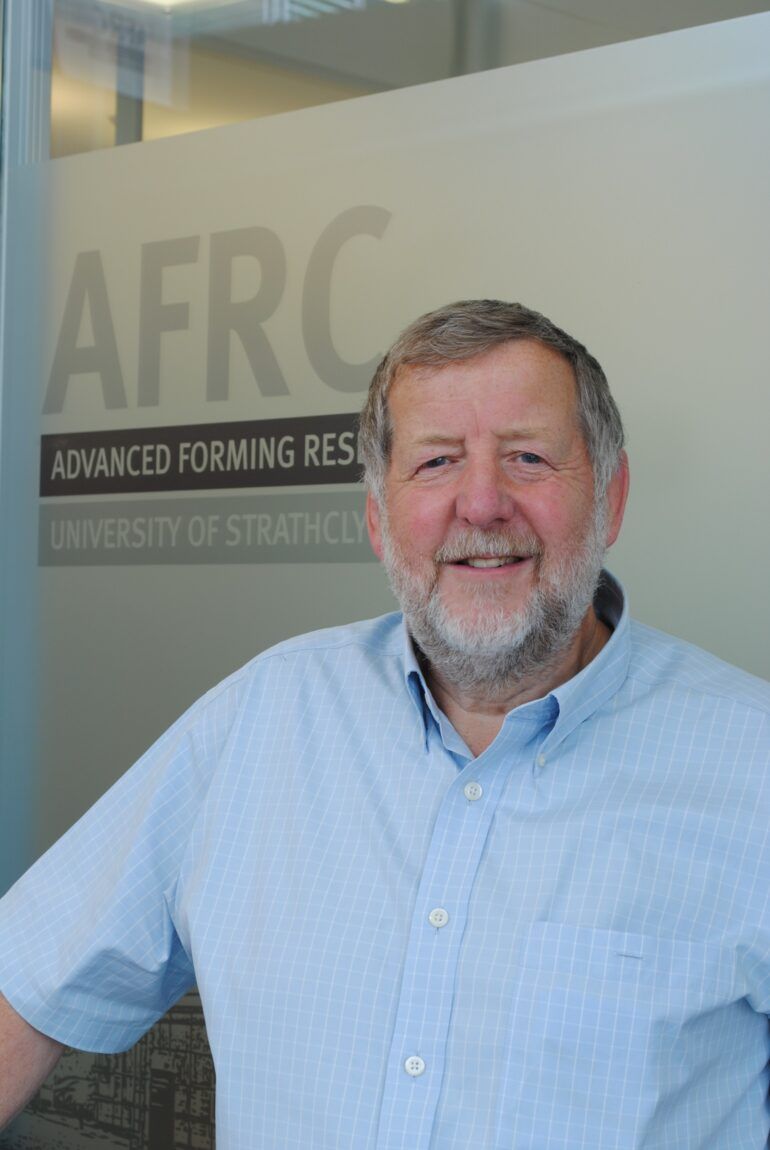
Professor Keith Ridgway CBE
In the space of 10 years, Sheffield lost much of the steel industry, the mining industry and all the jobs in the supply chain, so it was particularly poignant that we developed the Advanced Manufacturing Park on the site of the famous Battle of Orgreave miners’ strike.
Being in at the start is the most exciting time. We were able to attract world-renowned companies such as Rolls-Royce, Boeing, and McLaren and creating jobs and opportunities for young people from the area was very rewarding.
I want to see that happen in Renfrewshire.
In decades-gone-by, people lived close to the place they worked, the supply chain was local and skills were highly localised. Over time, we have changed the way we work and have become accustomed to a daily commute, spending one hour at each end of the working day sat in a car. Now, the Coronavirus pandemic and the climate change emergency are making us rethink this.
Working from home and greater digital connectivity will shape our future working environment. At NMIS, there is a real possibility less people will be working at desks, but there will be more workshop and interactive space for people to meet informally. It is important to have this collaborative workspace. It’s surprising how often you need a big empty space to do things in, a space where you can build a prototype, throw ideas together and see what happens.
AMIDS has a fantastic opportunity to really shape the way we work, not only in Renfrewshire, but the rest of Scotland and the UK. It brings skills, research expertise and manufacturing all together in one place, creating an attractive place to work, where people can mix and generate new innovative ideas.
Renfrewshire Council is approaching its development in the right way, starting with Netherton Campus as its nucleus, and with Inchinnan Business Park and Westway, there’s ample space to see that nucleus expand.

Artist impression of Netherton Campus, at the heart of AMIDS
One big thing here that Sheffield doesn’t have, is the global connections afforded to us by an international airport; people can get here from London in an hour and a half and with ease if travelling from further afield.
Having NMIS here is crucial to attracting big-name manufacturers to the district and if you attract a company making ships, planes or trains they will subsequently attract the companies within their respective supply chains.
NMIS will bolster SMEs to ensure they are ready to seize the opportunities that come from working with the big companies. It will upskill the current workforce as well as working with Scotland’s colleges and universities to give young people the skills and experience needed to become the highly-effective workforce of the future. It will also give businesses access to the technical expertise and capabilities they need to de-risk innovation and ultimately grow and become more competitive in a global market place.
We’ll be doing things differently in 20-years-time, new processes, new technologies and new materials will emerge and AMIDS will enable Scotland to be at the forefront of this manufacturing revolution.
About Professor Ridgway
Take a look at these stunning images captured by local photographer Gary Chittick as he showcases the area’s beauty with his work.
Gary Chittick spends his working week as a project lead and manager for Renfrewshire Council, but his spare time sees him indulge in his love of the outdoors and photography.
Gary says Paisley will always be somewhere that he can connect with. The town and Renfrewshire gives him a constant supply of subjects, from unique historical buildings and architecture to green spaces and landscapes.
Here, he tells you the stories behind some of his favourite photographs taken around Paisley.
Aurora from Glennifer Braes
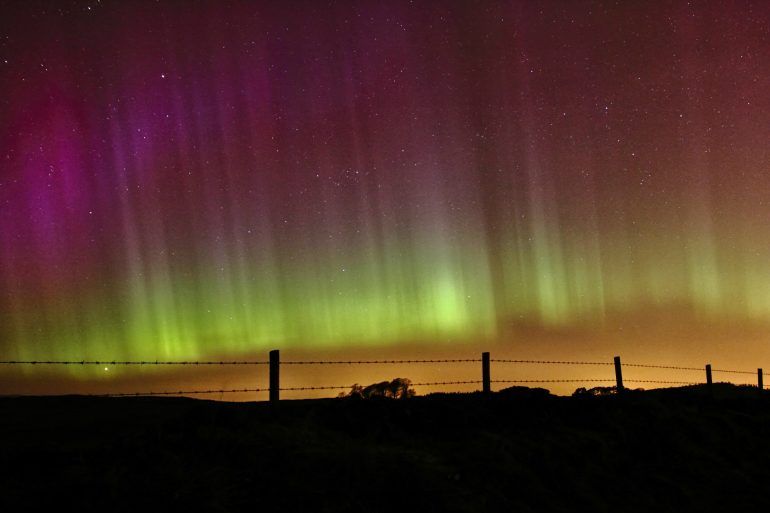
As an experienced “aurora chaser”, this was an image from one of my favourite displays from Renfrewshire. The beams and movement were visible to the naked eye and lasted about 20 minutes.
Paisley Skyline and Noctilucent Clouds
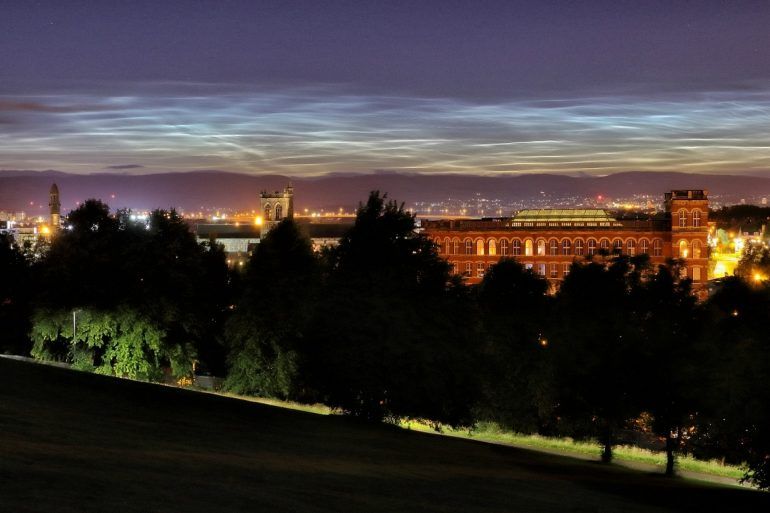
Often visible between May and July, these noctilucent (night shining) clouds made for an interesting horizon on this view from Saucel Hill.
Glennifer Braes Lightning
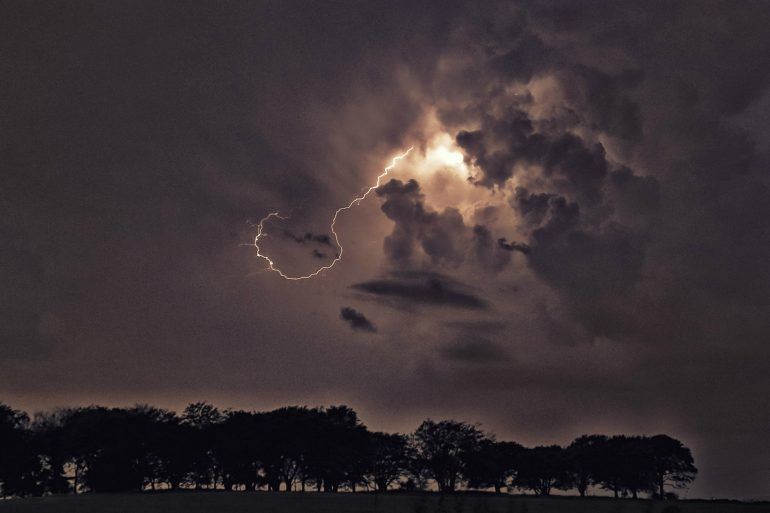
A disclaimer first – I do not recommend standing outside in a lightning storm with an assortment of metallic items. The chance of capturing a lightning bolt in our own backyard was too inviting to pass up though!
Anchor Mill and Noctilucent Clouds
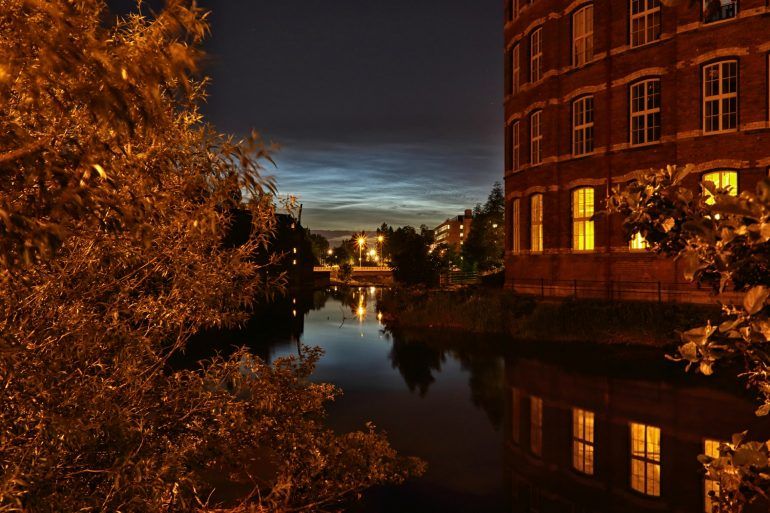
An evening image of the iconic Anchor Mills but this time with a very still White Cart River and some noctilucent clouds visible to the north.
Paisley Abbey
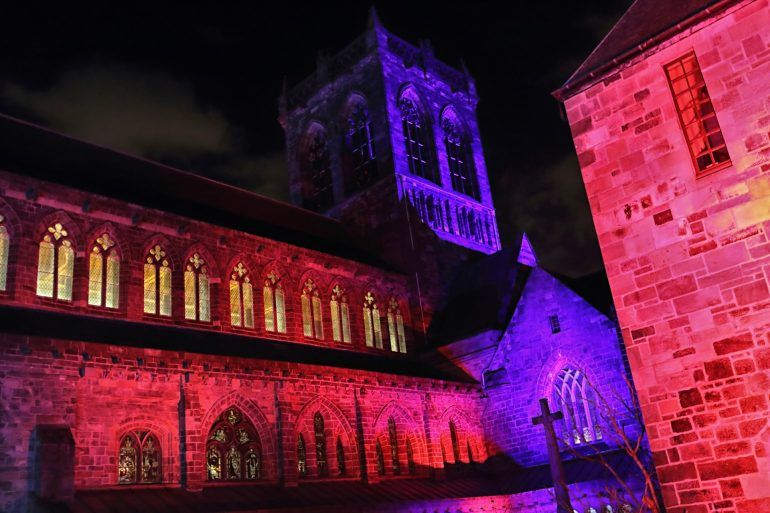
The historic Paisley Abbey always looks amazing – and is particularly stunning when lit up for various events in the town.
Glennifer Braes, Tree Lined Avenue
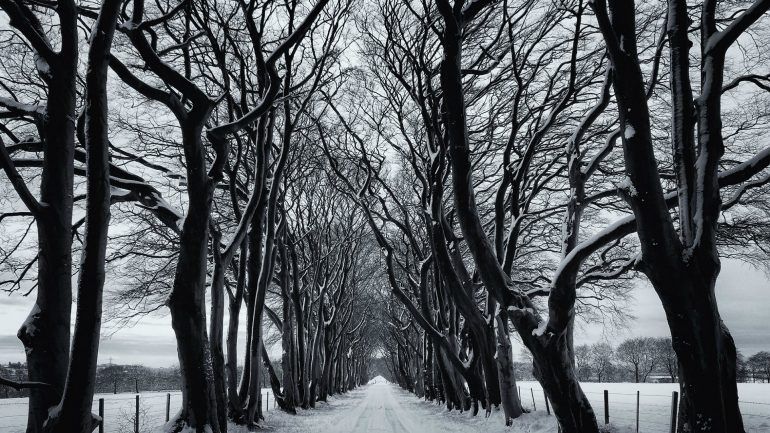
Without doubt, my favourite tree-lined avenue in Renfrewshire on the Glennifer Braes. It looks amazing no matter the season. This image was taken in winter.
Craigielinn Falls, Glennifer Braes Country Park
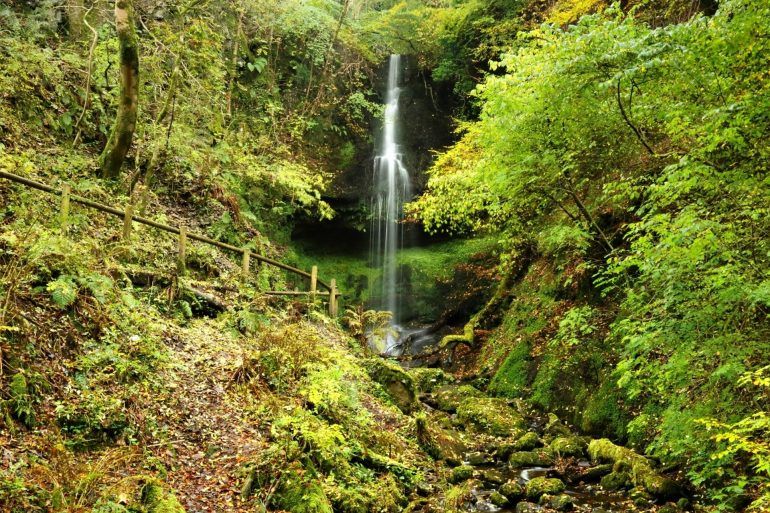
This waterfall can be spectacular, especially after some rain. Best of all, it’s right on our doorstep.
You can follow Gary’s photography via:
Plus, find out more about Gary with his Paisley.is blog by clicking the link below:
Images supplied by Neil McLean
In a way that mirrors our modern world, the mid 70’s was propelled forward by two unmistakable forces- activism and innovation.
Dubbed “a pivot of change” by historians, the cultural and political landscape would be forever altered by ground-breaking developments that took the prohibitive attitudes of the past and emphatically discarded them.
While it’s easy to presume that these everyday acts of revolution were occurring in some distant land, one of the era’s most potent and enduring forces found solace in a town teeming with talent and a simmering spirit of rebellion.
Unwilling to bow to tyranny, the songs that pay homage to the industrial action that inspired our annual Sma’ Shot Day and the powerful anti-slavery poeticisms of our bard Robert Tannahill may seem, at face value, inapplicable to the 1970’s. Yet upon closer inspection, they share ancestral DNA with the rugged protest music that would come to define the decade. Namely, the biting, abolitionist fury of punk rock.
Denouncing polite society and the overwrought sounds of early 70’s rock music in one fell swoop, punk took things back to the basics in the most exhilarating fashion imaginable. The voice of the disaffected youth that’d been numbed into apathy by the charting sounds, its minimalist three chord structure and yelped lyrics gave it an industrial quality while in the same breath, leaving ample room for creativity.
Naturally, that fusion of the two made it a perfect fit with a town that’d made its name exporting ingenuity to the wider world. However, Paisley’s tight-knit affiliation with punk came through process of elimination.
As is customary with any youth movement, the establishment acted scornfully, downgrading its revolutionary ideals to plain-old delinquency. Speaking as the grassroots genre began to instil panic within suburban minds, Glasgow’s Lord Provost took a hard-line stance against the scene declaring, “We have enough hooligans of our own without importing them from south of the border.”
Sparked by a sole gig that rocked the city in July of 1977, John McNeil, lead singer of famed Scottish punks The Zips. correlates Glasgow’s decision to outlaw the genre with Paisley’s informally adopted status as a refuge for the new musical form.
“Glasgow’s City Fathers had serious concerns about punk and any bands of that ilk wouldn’t be welcome”, ‘Jonzip’ recalls. “In the Sex Pistols’ case, they were banned from even entering the city boundary. These draconian measures came off the back of a rowdy Stranglers gig in the old City Halls. Coupled with local press hysteria and the Pistols’ infamous– but hilarious– appearance on Bill Grundy’s Today Show, the unofficial ban lasted 2 months. But at local level, lasted well into ’78 as the pub owners feared losing their licences. Initially, we couldn’t get a gig for love nor money. It was a case of no room at the inn if you played any faster than waltz-speed.”
“Meanwhile, Paisley was proving to be a hotbed of punk activity. This ‘punk Dunkirk’ between the two towns was achieved via Bruce’s Record shop in Glasgow, which organised buses to transport gig-goers to the rescheduled shows.”
“The knock-on effect, though” John continued “was to encourage an ever-increasing punk awareness amongst the youth of Paisley. Which in retrospect, was to the detriment of Glasgow.”
Unbeknownst to John, there were already idealistic young creatives from Renfrewshire that had set their sights on a life of rallying against the status quo. Among the first wave of acts to decamp to Paisley’s St James Primary School hall to hone their material, Gerry ‘Attrick’ Rodden of Fire Exit remembers all the pieces serendipitously falling into place for them.
“I brought up in Renfrew and I’d always played in bands. They were mostly rock, but I was always into The Stooges and Iggy Pop as well as New York Dolls and all that. They helped it explode over here, so it was just a natural progression into it”, Rodden reminisces. “I was a drummer but I ended up singing in a punk band from 1977 onwards. Somehow, I’ve been in same band for 43 years (laughs).”
“We formed with a bass player from Paisley and a drummer from Renfrew. After that, we went down to London to record a single, engineered by Pat Collier of The Vibrators”, Gerry beams.
An excursion that’d result in him becoming ‘pally’ with Captain Sensible of The Damned—whose October 1976 single ‘New Rose’ is often cited as the first UK punk single– alongside a whole host of other luminaries, Fire Exit is one of many Paisley acts who’d go on to make an impact further afield.
Like any illustrious music scene, Paisley’s pivotal role in the wider punk mythology would’ve been impossible without beloved venues for it to orbit around. And in ‘Life After Dark’ by famed ‘The Hacienda’ DJ Dave Haslam, he cites one such Paisley haunt among a laundry list of iconic epicentres to hear new talent. Discussing this incendiary timeframe, Haslam recalled the “added pleasure of tracking down emerging bands and ending up in a room full of like-minded music fans”.
For some fortunate fans, [they could] embrace these excitements at [Liverpool’s] Eric’s, The Factory in Manchester, The Limit in Sheffield, the Nite Club or Valentino’s in Edinburgh, the Bungalow Bar or The Sandpiper in Nottingham.
“Some months or years later”, he continued, “there could also be the satisfaction and a host of memories gained from having seen bands fresh, close-up and hungry, on their way to a career playing major halls and selling millions of albums.”
A genre that was defined by its patrons as much as it was its performers, Neil ‘Tam Pax’ Mclean looks back upon the original incarnation of The Bungalow fondly.
“A maestro, by the name of Louden Temple, saw what was going on beforehand and opened the doors to some of the most incredible bands coming out at the time. Not only was The Bungalow a haven for the local punks and held infamous Saturday afternoon jamming sessions, but night-time made it a home to a who’s who of the top punk & new wave groups of that period”, Neil proclaimed. “The list of artists and bands playing The Bungalow was endless. It was a hotbed of talent. We were all regulars and the great thing was that you could mix with the groups. It really added to the atmosphere.”
Having played in the original Bungalow “about three times” before performing in its modern-day, Shuttle Street incarnation years on, Gerry Attrick cited one instance where a Fire Exit set was taken in by soon-to-be illustrious onlookers.
“One time, Jim Kerr [of Simple Minds] and Billy Sloan [BBC Radio Scotland DJ] were sitting the end of the bar watching us.”
Counting The Skids, Psychedelic Furs, The Associates, Altered Images, Chelsea, Slaughter and the Dogs, Echo and the Bunnymen, Aztec Camera, The Fall, Primal Scream, Teardrops Explode, The Zips and Belle Stars among the alumni, Simon Goddard’s ‘Simply Thrilled’– a history of Glasgow’s Postcard Records– spotlighted one particularly noteworthy set from Orange Juice as they barrelled towards the success that awaited them, claiming that “during the ramshackle set, a third of the audience took their leave, but those remaining demanded two encores.”
Never intended to be middle-of-the-road, it’s a story that exemplifies what punk, post-punk and new wave was and still is all about. It might not be for everyone, but those who loved it will cherish it like nothing else.
Placed in exemplary company as far as seminal venues go, Paisley’s position as an outpost for punk is also indebted to a now-obsolete hotel. Known as the Silver Thread, Made In Paisley’s Caroline Gormley would later learn that her dad—the chef—would sneak skint young punks through the backdoor to see their idols up close and personal.
“My dad died five-years-ago and it was a taxi driver who told me that he’d let him in. He’d never mentioned it and I was in the back of the car greetin”, she revealed.
As expected, Neil Mclean has nothing but halcyon memories of his time spent in this hallowed, Blackhall Street venue.
“The bands that played there were like a case study in punk talent, featuring the likes of The Rezillos, Generation X, The Adverts, Boomtown Rats, Elvis Costello, Johnny & the Self Abusers (later to become Simple Minds), Buzzcocks and more. There were also rumours of Sid Vicious drinking there one night, apparently sussing it out for the band’s upcoming ‘alias tour’ [as S.P.O.T.S].There are many fantastic memories from these times, Rose & Drew McDowall– who’d go on to join Poems and Strawberry Switchblade– were regulars along with Jim Kerr and the Glasgow cohorts.
“I remember us all sitting with Billy Idol and his group [Generation X] before their gig and when Billy got up to do sound check, I asked him to play ‘Anarchy [In The UK]’ and he did! Also, everyone lined up at the bar to get their mouths pierced for £1. You sucked on an ice cube for a minute before big Kenny Clash slammed a safety pin into your gub! These were fantastic times where young kids who liked the scene could actually see these groups in the flesh.”
Spawning the short but acclaimed discography of Paisley’s Groucho Marxist Records, its figurehead Tommy Kayes would then go on to mint the Paisley chapter of Rock Against Racism.
Echoing the movement that was led by The Clash, X-Ray Spex and Jimmy Pursey at the famous gig in London’s Victoria Park, Paisley would have its own RAR shows at Paisley TUC Club in Orr Square. In turn, setting the stage for what The Zips’ vocalist fondly remembers as “the first and last Ferguslie Park Festival” on 23rd June 1979.”
“It consisted of local boys, The Fegs, Mentol Errors and Defiant Pose along with Dialetics and Liberty Bodice”, McNeil remembers. “The bands performed on a flat-bed truck with an under-powered PA, in incessant pouring rain. The riot police were holed up in their vans, they were spoiling for a fight but didn’t want to get wet! The review in NME, was full of social comment, but there was precious little about the music.”
While that particular publication didn’t place an onus on what Paisley had to offer, Renfrewshire has ties to the proud punk tradition of the fanzine.
“Take a bow, I.T.A.E (It Ticked and Exploded)”, says John, “created by Robin Gibson, a schoolboy from Johnstone, who would go on to become deputy-editor of UK music-weekly, Sounds.”
As the punk ban gradually petered out, Paisley was no longer synonymous with the sound of resistance, but that hasn’t dampened its legacy one bit.
Decades later, an ex-pat of this fruitful scene would later go on to discover Paisley’ next great musical export. Initially making his way into music as the former bass player of The Mentol Errors, Brendan Moon is often pinpointed as the man that discovered Paolo Nutini. Born in Erskine but indebted to the experiences he had here in his formative years, Moon remains committed to nurturing local talent from Morsecode Management and Studios’ base in Hillington.
For those who lived it, Paisley’s synergy with the punk movement wasn’t a moment in time. Instead, it became the guiding force that realigned their perspective on the world, fostering no shortage of unbreakable bonds along the way.
“I met Arturo Bassick from The Lurkers all those years ago in The Silver Thread and yet he’s still playing, we’re still mates” Gerry Attrick affirms. “We all still meet up and did a gig with them and Menace at Christmas, it was magic. It’s just amazing how you stay connected to these folks”
Transporting Paisley from a humble satellite town to the home away from home for a pioneering genre, the spirit of those days still pulsates through the very heart of the community, just waiting to be reignited.
More than 80 grants were today announced by the foundation with Paisley Museum receiving the highest heritage grant outside London.
When Paisley Museum reopens, it is expected to attract 125,000 visits each year from Scotland, the UK and overseas and provide a £72m economic boost to the area over the next 30 years.
The £42m redevelopment of the museum is the signature project in Paisley’s radical regeneration which also includes refurbishments of the town’s A-listed town hall and a new learning and cultural hub housing library services on the town’s high street.
The redesign of the museum campus, being led by an international team including architects AL_A and exhibition designers Opera Amsterdam, will allow the number of objects on display to be increased by 100%.

Few places of Paisley’s size have had such a global impact, and this is reflected in the museum’s internationally-significant holdings, which include an unrivalled collection of 1,200 Paisley shawls and vast natural history collections. They are currently being held in Paisley: The Secret Collection, the only publicly-accessible museum store on a UK high street.
The Museum’s final phase of fundraising is now underway with the recently-launched museum website reimagined.paisleymuseum.org showcasing the project’s ambitious vision.
Paisley Museum Reimagined is supported by Renfrewshire Council, the National Lottery Heritage Fund and the Scottish Government’s Regeneration Capital Grant Fund.
Councillor Lisa-Marie Hughes, Chair of Renfrewshire Leisure Ltd:
“We are delighted the Wolfson Foundation is investing in the future of Paisley Museum. The museum has been beloved by generations of Renfrewshire people and this significant sum brings us a step closer to radically transforming this prominent symbol of Paisley’s past into a central part of our town’s future. Investing in our venues is key to our recovery from the pandemic, as it will create jobs, support new and existing businesses in the area, and drive new footfall to our town centre.”
Eric Grounds, Capital Appeal Director of Paisley Museum Reimagined:
“Paisley Museum has remained at the heart of the community since being founded in 1871. This £42m project presents a once-in-a-generation opportunity to ensure our world-class collections are safeguarded, and the museum continues to be a source of knowledge, enjoyment and pride for everyone living in or visiting Paisley. We look forward to connecting with others who recognise the national significance of this project and the positive outcomes it will bring to Paisley.”
Paul Ramsbottom, Chief Executive of Wolfson Foundation:
“The Wolfson Foundation is committed to funding widely across Scotland and so we are delighted to be supporting Paisley Museum, especially at such a challenging time for cultural life generally. The scale of the ambition is extremely impressive – and the new Museum campus will tell a glorious mix of local and global stories, all based on superb collections.”
The episodes explore the impact of Covid-19 on culture and in neighbourhoods – with debate on the challenges, responses and ideas for the future.
The podcast can be listened to on Soundcloud.
Future Paisley is a far-reaching cultural regeneration programme that harnesses the power of the arts, heritage and culture for social and economic change. It draws on the rich heritage, cultural strengths and creative potential of Paisley and wider Renfrewshire to shape the area’s future.
Listen to the podcast now on Soundcloud
Gemma Fraser from Castlehead High School and Shona Paul from Glasgow School Of Art talk about the wonderful partnership which was designed to unlock potential in pupils, encourage innovative thinking, increase attainment and develop skills needed to thrive not just at school and work but in broader society.
The pair share the success of the partnership so fair and the hurdles which they have overcome during Covid-19.
Listen to the podcast now on Soundcloud
Journalist and editor of Mill Magazine, Robert Blair and Scotland’s best beatboxer, Bigg Taj give insight into the world of Scottish hip-hop and how it is taking off in Renfrewshire. They both explore the ways in which they can create more accessibility to young people in music; as well as discussing ways they can welcome back live performance and nurture new talent again in the future.
Listen to the podcast now on Soundcloud
Dorothy Adamson from U3A and Martin MacLennan from Civil Disobedience discuss the work they are doing to commemorate the 200th anniversary of the Radical Wars of 1820.
Listen to the podcast now on Soundcloud
Artists Kerry Stewart and Rachel Lowther provide insight into the working lives of artists as well as their experiences of creating a public artwork in Paisley to commemorate the Glen Cinema tragedy.
Our guests cover the history of the tragedy and the impact it had on the town which is still present today. Kerry and Rachel are working to replace the silence, with their careful approach to creating a work of art which engages and amplifies the voices of the town.
Listen to the podcast now on Soundcloud
In this episode Alan Clark from Create Paisley and Jenni Mason from PACE Theatre Company reflect on the success of this year’s digital Sma Shot Day and their involvement in it. They explore the importance of maintaining and building relationships with young people in the community at a time like this. This uplifting episode highlights the vital work organisations such as PACE and Create are doing for our young people right now.
Links to Create and PACE’s Digital Sma Shot Day performances;
paisley.is/discover/unplugged-…ith-create-paisley/
paisley.is/discover/this-is-ou…story-a-radio-play/
Links to PACE; www.pacetheatre.com/
Create; www.createpaisley.org.uk/
Listen to the podcast now on Soundcloud
The fifth Future Paisley podcast features Artistic Director of the Tron Theatre, Andy Arnold, and musical director, Hilary Brooks (Sunshine on Leith) who have an engaging and thought provoking discussion on the wonders of live theatre, place and music. The podcast also features a very special guest appearance from legendary Paisley born playwright and artist John Byrne, as he shares his memories of Paisley, and his experience writing of the play.
Listen to the podcast now on Soundcloud
In the fourth instalment of the podcast Paisley musicians Linzi Clark (DRIFT) and Marie Collins (The Vegan Leather) have a conversation highlighting the incredible work they both do in nurturing and supporting vital connections with other musicians. They also address the struggles they have faced during lockdown and give an honest account of the highs and lows of being young women pursuing careers in music. This podcast highlights the importance of place for a creative community, and ends with a long list bands and musicians to listen too from Paisley and Renfrewshire!
Listen to the podcast now on Soundcloud
Welcome to Engage Renfrewshire’s New Buddies Network officer Gozie Joe Adigwe and Jambo! Radio founder George Tah. Gozie and George share an enriching conversation exploring cultures, heritage, place, diversity, language and family and look to a future shaped by understanding, tolerance and community.
Listen to the podcast now on Soundcloud
This week, the podcast catches up with writer Alan Bissett and musician Crawford Smith. Based in Lochwinnoch, this episode explores the new roles they have found themselves in, the impact Covid-19 has had on their careers and their village, and looking at new ways of giving their work a platform.
Listen to the podcast now on Soundcloud
The first Future Paisley podcast welcomes Sharon McAulay from Star Project and Alan McNiven from Engage Renfrewshire. This conversation explores the role that culture plays during lockdown and the rise of new digital barriers they are both working to overcome.
Paisley Halloween Festival has been named Best Cultural Event or Festival at the Scottish Thistle Awards 2019/2020 National Final.
Organised by VisitScotland, the prestigious awards celebrate innovation, excellence and success in the Scottish tourism sector.
The popular event in Renfrewshire Council’s annual calendar picked up the National Award for its 2018 festival, which saw crowds of over 34,000 people flock to the town across two days to enjoy a bumper programme of spectacular aerial performances, thrilling live acts and a Mardi-Gras style parade with more than 500 costumed performers.
Inspired by the town’s dark and deathly 17th century witch history, the enhanced theme of ‘Something Wicked this Way Comes’ thrilled visitors from all over Scotland.
Judges were impressed with the seasonality of the event and the growth that it has seen in recent years. They also praised event organisers for their engagement with young people and the community.
The festival was a highlight of VisitScotland’s Year of Young People 2018 celebrations, with young people at the heart of the festival’s development and delivery.
A 20-strong Youth Panel worked alongside Renfrewshire Council’s Events Team to design and deliver the programme, while more than 500 young people took part in a new creative learning programme. This provided young people with the opportunity to participate in all aspects of festival from performance to live event management and technical production.
The Scottish Thistle Awards is based on five regional programmes with the winners of each progressing to the National Final.
Paisley Halloween Festival was among 15 winners in the regional finals for the West in November – which included businesses and individuals from Greater Glasgow & The Clyde Valley, Ayrshire & Arran, Dumfries & Galloway and Argyll & Bute.
The National Final took place at the Edinburgh International Conference Centre last night (March 5), and saw 18 individuals, businesses and events honoured for their contribution to the tourism sector.
Louisa Mahon, Renfrewshire Council’s Head of Communications, Marketing and Events, said: “We are absolutely thrilled that Paisley Halloween Festival has won Best Festival in Scotland at the Scottish Thistle Awards. We were in a category with some of Scotland’s most amazing cultural events and are delighted to be keeping company with them. Well done to everyone.
“Paisley Halloween is one of the most highly anticipated events in our calendar – and is now regarded as one of the biggest and best of its kind in the UK.
“Winning this award continues to put Paisley on the map as a great place to visit and experience world class cultural events – and we look forward to continuing to welcome even more people to Paisley to enjoy.”
VisitScotland Regional Leadership Director Gordon Smith, said: “Congratulations to everyone at Renfrewshire Council on winning the national Scottish Thistle Award for Best Cultural Event or Festival. This is a fantastic achievement for Paisley Halloween Festival which has become one of the most anticipated events in the region’s calendars which has gone from strength to strength in recent years.
“The Scottish Thistle Awards give businesses and individuals working within tourism in Scotland the opportunity to earn the recognition and appreciation they deserve from their own industry peers.
“The impact of tourism goes far beyond the holiday experience. It is vital to the Scottish economy, reaching every corner of the country, creating jobs and bringing economic and social change.”
The Scottish Thistle Award marks another celebration for the Paisley Halloween Festival after it won Best Festival or Outdoor Event at the EventIt E Awards in June 2019.
The Paisley Halloween Festival is organised by Renfrewshire Council and the 2018 event was supported by the Year of Young People 2018 event fund managed by EventScotland, part of VisitScotland’s Events Directorate.
For more information on the Scottish Thistle Awards, visit: https://www.scottishthistleawards.co.uk/